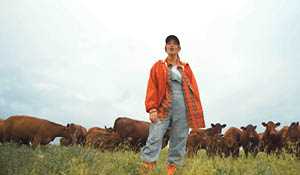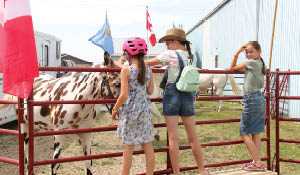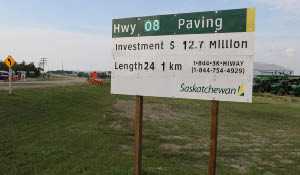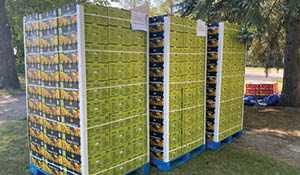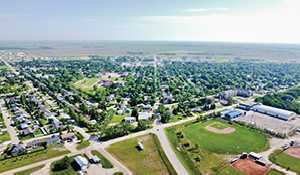Ag minister Daryl Harrison officially kicks off harvest at farm near Clair
August 18, 2025, 9:43 am
Ryan Kiedrowski, Local Journalism Initiative Reporter
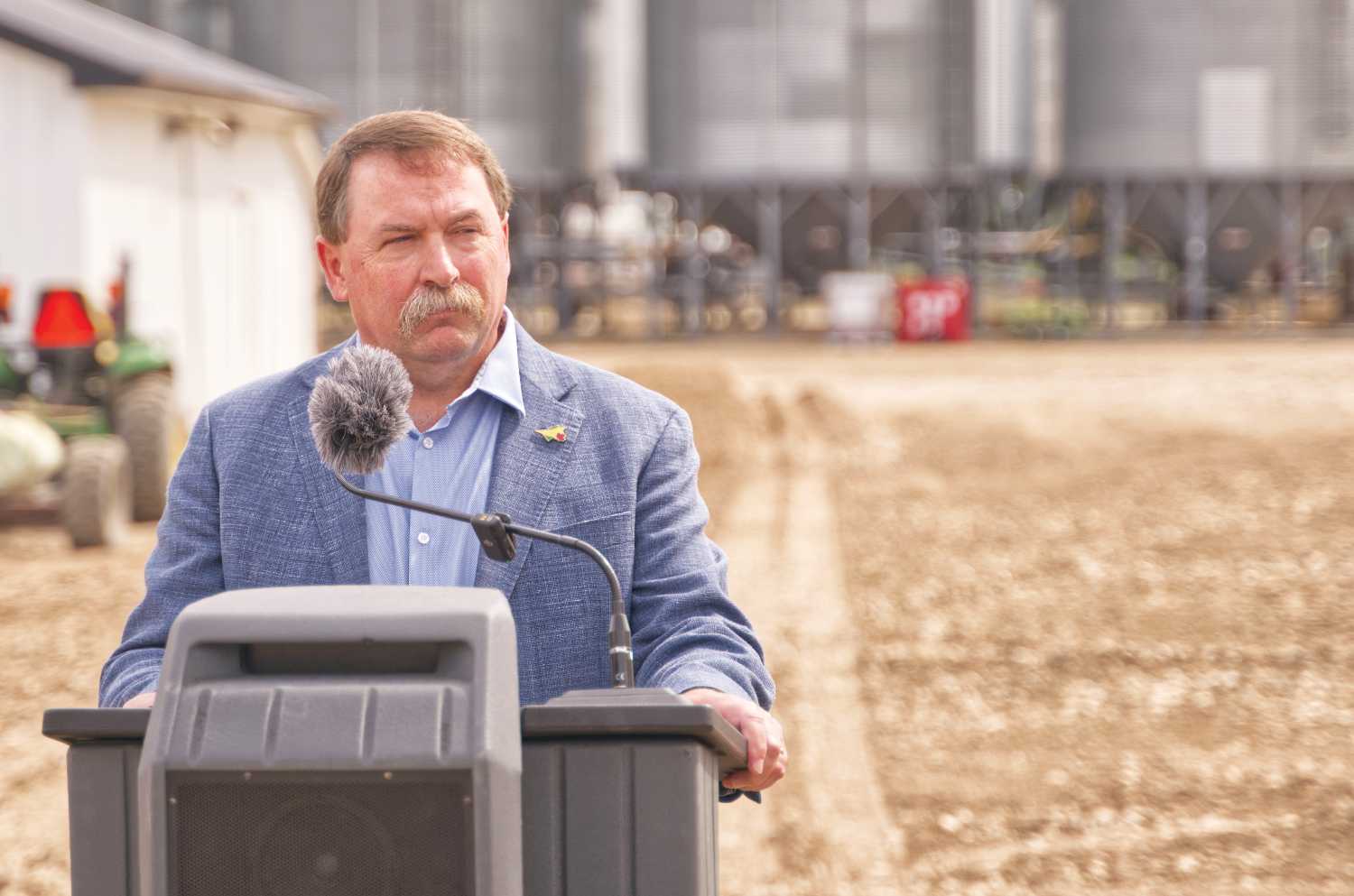

Provincial Agriculture Minister Daryl Harrison marked the start of the 2025 harvest season on a farm near Clair last week.
“I know that in some parts of the province, weather conditions have been challenging this year —whether it’s a lack of moisture or even above average rainfall—and even though things have been a bit more variable, we remain optimistic for a strong and productive harvest this year,” he said, standing near a quonset on Layne Kapeluck’s farm.
“As harvest begins, people across this province are reminded of the continued importance of agriculture to our economy. The sector is responsible for 10 per cent of the provincial economy and 41 per cent of our total global exports.
Last year, Saskatchewan harvested 35.5 million metric tons. Over the past decade, we have crop production increasing across the province thanks to improvements in farm productivity, adoption of new technologies, and innovation in crop science. These improvements allowed Saskatchewan farmers to seed more than 37 million acres of cash crops this year alone, from wheat to canola to other crops like lentils, we continue to grow and expand.”
On the same morning of the official start of harvest, the Chinese offered yet another blow to the national canola sector, imposing a 75.8 per cent anti-dumping duty on additional Canadian canola products effective Aug. 14.
“It was certainly a disappointing announcement that come out this morning,” Harrison said. “China’s been reviewing the anti-dumping of our canola seed, and that’s finally come out. It’s disappointing.”
The nearly 76 per cent tariff is in addition to existing 100 per cent tariffs on canola oil, canola meal, and peas.
“(The) Premier’s reached out to the Prime Minister, I’ve reached out to the federal minister, I’ve also reached out to my provincial counterparts here on the prairies,” Harrison told reporters. “It’s disappointing. We need the federal government—and specifically the Prime Minister—to engage directly with the President of China. We need that engagement. We need it now. We knew it was always lingering, but it’s of the most utter importance that he does that immediately.”
Canola is the second largest crop across Canada with more than 21 million acres produced every year. It’s also a top monetary crop, generating $12.9 billion in farm cash receipts in 2024. The Chinese market makes up 67 per cent of total canola seed exports with 5.9 million tonnes sent their way last year worth around $4 billion. Provincially, Saskatchewan produced 9.8 million metric tonnes of canola seed last year with exports of $3.2 billion.
Safety needs to be top of mind at harvest time
Another reason Harrison gathered some fellow local MLAs, media, and area producers together was to emphasize the message of safety.
“Harvest is one of the busiest, most physically and mentally demanding times on the farm, and this means things can sometimes go wrong from machinery-related accidents to slips, falls and fatigue-induced errors,” he said. “These risks rise under the pressures of harvest. We know harvest time can be a race against the clock and mother nature to get that crop in the bin, but we want to remind producers to take time to rest, stay hydrated, and follow all safety protocols.”
Transportation-related incidents are the top cause of fatalities on the farm, with SaskPower noting more than 300 incidents of machinery contacting overhead power lines every year, mostly occurring during busy seasons.
“Farm accidents happen not because someone didn’t care, but because someone got distracted, tired, or thought, ‘this will only take a second’,” said Harrison, a lifelong rancher in the Alida area with more than three decades of experience in the oil industry. “This year, let’s make sure we take that pause and prioritize safety. This means always turning your machinery off when stepping out of the tractor—even for a quick moment. The amount of time you could save by leaving the motor running is not worth the risk. If you’re working with others—especially young or new workers—teach them patience. Safety isn’t instinctive, it’s learned, modelled, and repeated.”
Safety during the harvest season isn’t something only relegated to those involved in the industry, and Harrison urged everyone to exercise caution during this busy time.
“Of course, we know that safety during harvest doesn’t just mean on the farm,” he said. “I also want to remind those who use our rural roads and highways to use extra caution at this time of year. I urge caution and patience with large equipment moving down the roads. Whether you’re a farmer moving equipment or a commuter driving your daily route to work, everyone plays a role in keeping our roads safe.”
Large machinery moving between fields is a common sight this time of year, and gravel roads especially can be tricky to navigate.
“Please provide some patience and provide some room for the large equipment,” Harrison said. “During harvest, we see an increase in slow-moving equipment on roads, big tractors, combines and trailers, they take up more space than a standard vehicle. These machines need to be on the road to get from one field to another, but they can also present risk to other drivers.”
The agriculture minister listed a few safety tips to keep in mind while traveling rural roads this fall.
“Motorists need to slow down, give these machines space and stay alert,” Harrison said. “Farmers need to use escort vehicles when appropriate. Plan routes and be visible. Let’s share the road with care. We all want the same outcome, a successful harvest season without injuries. Let’s make that happen.”
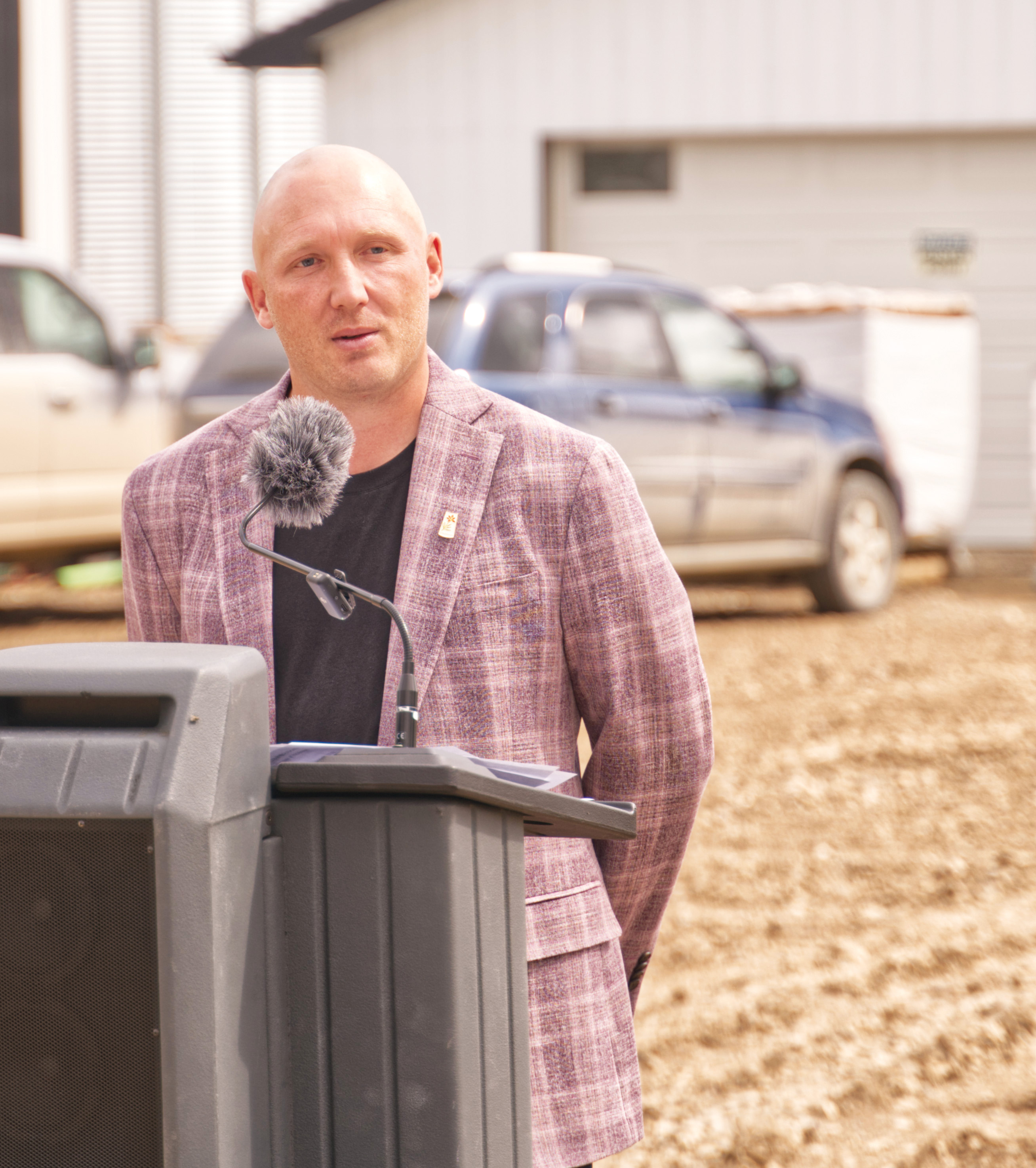

Mental health ‘most important investment’
Another important area is the mental health aspect of farm life during harvest. Wadena-Kelvington MLA Chris Beaudry knows this aspect far too well. He’s a fourth-generation producer near St. Front and was part of the coaching staff for the Humboldt Broncos during the time of the tragic collision near Arborfield that claimed the lives of 16 people and injured 13 others on April 6, 2018. Since then, Beaudry has devoted much of his time to public speaking and advocacy on mental health, trauma, and grief. He also helped establish the first online mental health course for students in the Sun West School Division and has worked with the Canadian Mental Health Association.
“Farming is a career like no other with pride in knowing that you’re helping to feed the world and contribute to your local and provincial economies and yet it’s also one of the most unpredictable and high stress professions,” Beaudry said. “Producers start each crop year not sure what the season’s weather may bring—will there be enough rain? Is their machinery going to hold up? How are the commodity markets doing in the current environment? For most farmers, this level of uncertainty is not the exception, it’s the norm. This means that mental and physical well being is a necessity. Sustainable farming doesn’t just mean nurturing the land, it means looking after yourself and your employees, too. We don’t often talk openly about mental health realities on the farm, but that’s changing, and it needs to. Supports exist, they’re accessible, and there’s no shame in using them.”
Beaudry pointed to the Agriculture Health Safety Network, which provides educational materials and workshops to enhance safety on farm operations. The Saskatchewan Safety Council also has free online training in agricultural safety that is accessible to anyone.
He went on to highlight three mental and physical health initiatives supported by the Sustainable Canadian Agricultural Partnership Health and Safety Network, which is funded by both provincial and federal levels of government.
“The first is the Agricultural Health and Safety network at the University of Saskatchewan,” Beaudry began. “Since 1988, this network has grown from six rural RMs to over 204. Serving more than 21,000 Saskatchewan family farms, this network offers respiratory and hearing health newsletters, fact sheets, and even student scholarships. Its farm safety plan workshops help operations build personalized safety systems that fit real-life working conditions.”
Secondly, he mentioned the Farm Stress Line that can be accessed 24 hours a day at 1-800-667-4442.
“Calls are answered by trained crisis counsellors through the Mobile Crisis service,” Beaudry explained. “It’s free, it’s confidential, and it’s judgment-free. They handle everything from mental health concerns to family dynamics, financial struggles, addictions and more.”
The provincial Safety Day Program rounded out the list, which is presented by the Saskatchewan Association of Agricultural Societies and Exhibitions, reaching more than 5,000 students every year.
“Through hands-on safety lessons, they’re educating a generation to understand the risks and to know how to manage them,” Beaudry said. “Groups like Do More Ag, Sask Ag Matters, Agrivita, and the Farmer and Rancher Mental Health Initiative are also doing their part to change the culture around mental health and agriculture. These programs offer services that range from free sessions with counsellors who have a farm background to applied research to help ensure programs and services serve producers’ needs.”
Beaudry stated how taking care of mental health is the biggest investment a producer can make in their operation.
“Caring for your health is not selfish, it’s strategic,” he said. “It’s the most important investment you can make on your farm and in your future. Talk to your neighbors, talk to your family, share your story, save the Farm Stress Line number. Together, we can build a culture of wellness in agriculture; one where every farmer and worker feels supported and valued.”
When asked by the World-Spectator if they felt there has been a shift where producers feel more comfortable with talking about mental health, both Harrison and Beaudry agreed that there has been a change.
“I think producers are feeling more open to sharing their most inner thoughts and being true to themselves, but also committing to share that with their family and friends for that local support,” Harrison said.
Beaudry commented how that change has been present for some time, that producers were exercising the correct methods without realizing it in some cases.
“I think we’ve seen a change, and the change has been more based on the fact that people were doing this,” he said. “We just didn’t know it when you reach out to a friend and you’re telling them how difficult the day has been, that’s part of sharing your story. Sharing your story can be a cyclical thing that when once you open up, it allows another person to feel motivated that they can share as well. And we’ve been doing that for years inside our communities when we have fall suppers, when we have get-togethers, harvest wind-ups, and people talk about how the year was, how difficult it was, how easy it was, and that starts a cycle that I think we need to continue.”
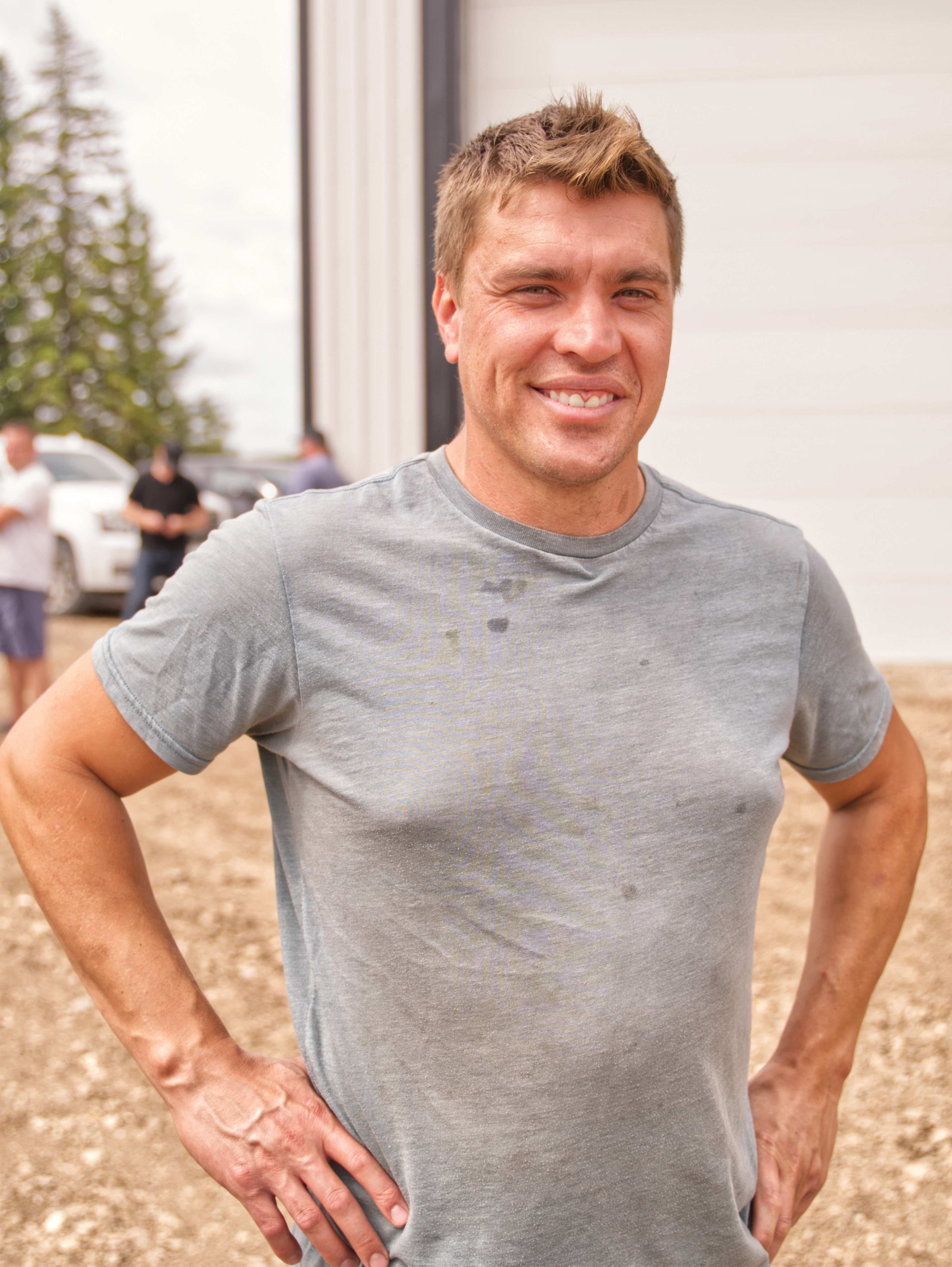

Interesting year for the northeast
Thomas Sunderland farms near Quill Lake and was at the Kapeluck farm for the harvest kick-off. With a mixed grain and cattle operation, he commented how interesting the swing can be across the province throughout any growing year.
“The way the farming is up here, and as you go from northeast to southwest, it’s just two different worlds,” he said. “The challenges up here are just totally different than if you farm at Leader.”
What set 2025 in particular apart for Sunderland’s land was the soil moisture content.
“The biggest advantage we had this year is we seeded into good moisture,” he said. “We had really good moisture going in, a very dry May, and a dry early June. We had four inches around at the end of June, which kind of carried us through until we recently got an inch and-a-half. All things considered, I think we have a pretty decent crop. You never know until you take it off!”
Sutherland credited the last rain shower for the enhanced development he noticed.
“We actually were happy with that last inch and-a-half,” he said. “It should fill the canola, we had some peas that were moving slowly, it should fill them, but we don’t need any more now.”
As wildfire smoke hung in the sky for much of the summer, Sutherland noted there was a silver lining to that.
“Last year, we got a below average crop and the canola only bloomed for two weeks,” he said. “It bloomed for a month this year, so we’re hopeful that the smoke kept the temperatures down. We seeded relatively early this year, and it’s not going to be an early harvest because things move slow when it’s cool and smoky.”
Sutherland is estimating two weeks before hitting the fields to take off this year’s crop.
“We seeded all of our wheat before we seeded any barley; barley’s normally earlier,” he said. “We seeded some peas at the beginning and I thought they would be early, and they’re not going to be early.”
Generally, the area is renowned for maintaining consistent moisture levels as Canora-Pelly MLA Sean Wilson attested.
“The reality is we’re in the Parkland, so even when the southwest and the west has drought, we’re still always average or above average,” the former Mayor of Buchanan said.
He explained how friends in the southwest community of Lafleche often experience a year that begins with positivity, but as the water tap shuts off completely, the crops quickly diminish.
“Last year was a really good example, in June, I said, ‘how are the crops looking?’—beautiful, Wilson. I called him in three weeks time, ‘how are things looking?’—we’re done.”
Harrison echoed those sentiments when asked about the biggest challenge this growing season.
“Soil moisture across the province started out good in the early spring, quickly dwindled away with some not really hot days, but just lack of continued moisture throughout the initial growing season,” he said. “Then, as you see now particularly in Chris’s area here, it’s a rain that won’t stop and then that creates some quality concerns. It’s just very frustrating to see a good crop sprout or deteriorate out in the field.”
Ultimately, hopeful optimism reigns as producers prepare equipment for another harvest—be it wet, dry, or somewhere in between. Tweet

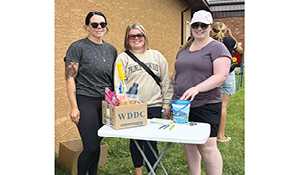
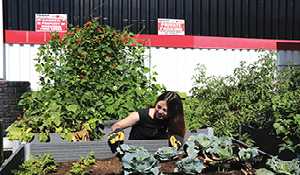

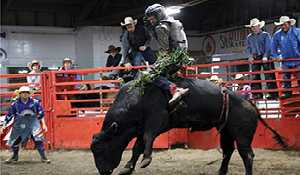



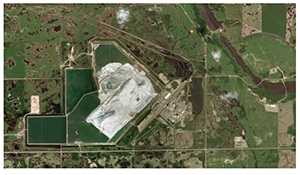
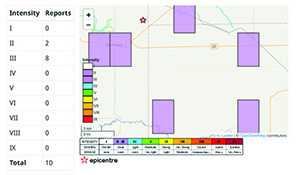





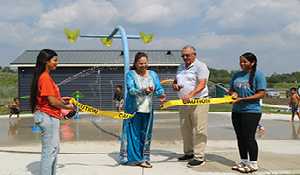
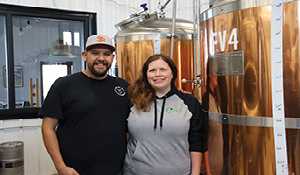

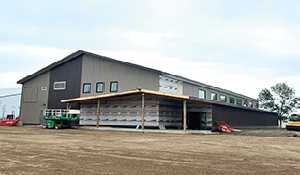
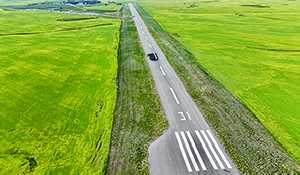

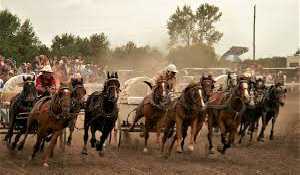
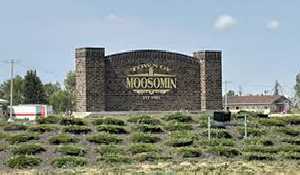


sm.jpg)



